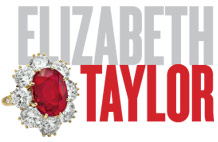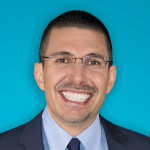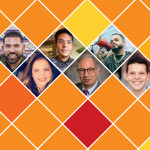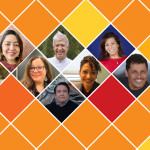76. Positive Women’s Network
Naina Khanna (another member of the Presidential Advisory Council on HIV/AIDS) runs this network of and for HIV-positive women and their allies to improve the quality of women’s lives by supporting and training HIV-positive women as leaders who spark federal policy change. PWN is a project of Women Organized to Respond to Life-threatening Disease (WORLD), an Oakland, California–based organization that has been serving HIV-positive women since 1991. Khanna and PWN get girl power right.
77. The President’s Emergency Plan for AIDS Relief
President George W. Bush believed that because America has the resources and tools to help keep the rest of the world healthy it is our moral imperative to do so. As we go to press, the fund’s 5-year budget is $48 billion; and it has saved millions of lives. PEPFAR protects our national security by helping maintain health, peace and stability in the developing world; it serves as great foreign policy by making new friends for America; and it is has ensured that drugs get to millions whose nations can’t provide them. PEPFAR’s infrastructure has also been used to fight tuberculosis and malaria—soon it may be used to address an extended roster of health concerns.
78. “Prison Health News”
If you’re reading this issue of POZ in a jail or a prison cell, or if you have a friend or a family member doing time, this newsletter is for you. Jointly produced by two HIV/AIDS activist groups in Philadelphia, it carries articles by prisoners and information that can serve as a lifeline to positive people behind bars.  79. The Rachofskys
79. The Rachofskys
Cindy and Howard Rachofsky, superstars in the world of AIDS fund-raising, bring fresh dollars to the mix. To date, their annual “TWO X TWO for AIDS and Art” event has raised more than $29 million jointly benefiting amfAR (of which Cindy is a trustee) and the Dallas Museum of Art. They get art donated to save people from AIDS. Each year, Dallas’s high society scrambles to secure tickets to this event.
80. Michael Emanuel Rajner, BSW
This one-man AIDS advocacy army lives in a tough district in Florida. Recently awarded the Humanitarian of the Year Award from the Broward Young Democrats for his lobbying work with state politicians, Rajner is the reason Congressman Alcee Hastings (D-Fla.) and Congresswoman Debbie Wasserman Schultz (D-Fla.) lobby so hard for AIDS. Google him and the phrase “pounding the marble floors of Congress” comes up. Not surprisingly, he is the legislative director for Florida’s GLBT Democratic Caucus.
81. The Robert James Frascino Foundation
The late Bob Frascino, MD, who lived with HIV himself, quieted many a troubled mind through his measured responses to questions posed to his “Ask the Expert” column on thebody.com. His advice lives in the archives, and his support continues via the Concerted Effort HIV/AIDS benefit concert series, which raises funds for HIV/AIDS services worldwide.
82. Carlton Rounds
Within just a couple of years of being newly diagnosed, Rounds started Volunteer Positive, which puts people with HIV to work helping other positive people around the world. His thinking? Help yourself by helping others. If Rounds is proof positive that it works, sign us up.  83. Chris Salgardo
83. Chris Salgardo
This Harley-riding CEO of Kiehl’s gives 100 percent of the proceeds from several of Kiehl’s top-selling lotions and potions to help underwrite AIDS research and the hunt for the cure. Kiehl’s annual Life Ride gathers bikers with a conscience to travel East coast roads to draw the spotlight and dollars to HIV/AIDS. On World AIDS Day 2009, Kiehl’s revived its Hand Care for a Cure (initially launched in 1997), a specialty hand lotion that raised more than $300,000 for amfAR; since 2001, Kiehl’s has raised upwards of $1 million for the cause.
84. Sangamo BioSciences Inc.
This group made some of the most significant progress toward a functional cure for HIV/AIDS with a compound known as SB-728-T. The Richmond, California–based research team discovered a thing called “zinc fingers” that allows them to control viral load in people with HIV, without HIV meds. Think of the zinc fingers as tiny scissors that can cut parts of a cell’s genetic structure away, rendering the cell impenetrable to HIV. Some of AIDS science’s big names—such as Carl June, MD—are associated with Sangamo’s work.
85. Kathleen Sebelius
As the federal government teetered on the brink of its third shutdown, U.S. Secretary of Health and Human Services Sebelius made the announcement that the White House funded a $1.89 billion grant in September for HIV/AIDS. She was named “the 13th most powerful woman in the world” in 2011 by Forbes magazine; we’re grateful that such a staunch AIDS advocate helps oversee the health of our nation. When we protest, she listens.
86. Michael Sennott
The dashing and charming Sennott is an openly gay and openly HIV-positive man who has long wielded influence behind the scenes of the AIDS world. (He lunches with Vice President Biden.) A board member of In the Life (see No. 52), Sennott is also chairman of the board of God’s Love We Deliver and a director of The Grand Street Settlement. The once vice chairman at global marketing giant the Interpublic Group, Sennott was the grease and the glue in several huge multinational mergers. His skills are essential for selling the idea that we can end AIDS.
87. Matt Sharp
Long-time survivor and activist Sharp is a volunteer in the clinical trial testing the efficacy of Sangamo’s zinc fingers (see No. 84). If the zinc fingers make his cells immune to HIV, Sharp could potentially suppress his HIV without meds. Like all other past, current and future participants in clinical trials, Sharp is allowing himself to be a human guinea pig in the hopes that his participation will help create techniques and compounds that can end the epidemic. Here’s to all the selfless brave souls in trials!
88. Michel Sidibé
The charismatic and eternally buoyant executive director of the Joint United Nations Programme on HIV/AIDS (UNAIDS) and the under-secretary-general of the United Nations, Sidibé is known for positioning health care as a human right. At the opening of the last International AIDS Conference in Rome, he pointed out that “history will not judge us by our scientific achievements but by how we will apply them.” Indeed. He spends much of his time circumnavigating the globe trying to secure the global funding for universal access to care. He’s a rock star of global health.
89. Kimberly Smith, MD, MPH
Based at Rush University Medical Center in Chicago, Smith is a Class A treatment researcher who continues to make significant headway in the HIV/AIDS academic communities in terms of understanding and addressing the tremendous racial disparities we’re up against. Racism is a large part of why the African-American community is so disproportionately impacted by HIV, and Smith uses her visibility and influence to speak truth to power: that the color of your skin should not make you more vulnerable to contract HIV.
90. Joseph Sonnabend, MD
Sometimes it takes a doctor to diagnose the complicated research results from an HIV/AIDS study. A pioneering AIDS doc (and prolific POZ blogger), Sonnabend makes sense of complicated notions, reading between the lines to unearth implications others miss. He’s often so ahead of the curve that some question his wisdom. Until he proves prescient and correct. He’s never afraid to highlight an unpopular truth and to swim against the tide. Independent thinkers like Sonnabend are essential.
91. Stop AIDS Project
Under Jen Hecht’s direction, this initiative aims to keep gay men safe by imbedding HIV prevention, testing and treatment information into places and websites where MSM cruise and date. It’s about giving people the information they need where they need it. And it’s now part of the San Franciso AIDS Foundation.
92. Andrew Sullivan
His blog The Dish is often about anything but HIV, yet this long-term survivor and former POZ contributor peppers his content with tales of the virus. We loved his recent post: an admission that the day he was diagnosed was the worst day of his life. In a world where HIV is too often mislabeled as “manageable,” we love him for telling the truth: HIV sucks.  93. Dame Elizabeth Taylor
93. Dame Elizabeth Taylor
As a rule, the POZ 100 features people who are still living. But we had to break the rule for the late, great, violet-eyed Taylor. Because her legacy is so strong, her presence will be felt for years to come. Few have the power to give as much as she did—and continues to do. On December 13 and 14, Christie’s New York will auction 269 of her magnificent jewels. Some expect the sale to raise $30 million for the Taylor estate. Christie’s is donating a portion of the monies generated by exhibition admissions, events and select publications to the Elizabeth Taylor AIDS Foundation. Liz will live forever in our hearts.
94. Sandy Thurman
The former U.S. AIDS Czar in the Clinton White House has re-engaged in high-level, behind-the-scenes political maneuvering. And man, are we glad Thurman’s back on the case. She throws the hottest AIDS party in America when she gathers the who’s who during the CDC’s HIV Prevention Leadership Summit. If you want to reach the powers that be in DC, you call her.
95. Treatment as Prevention
Game-changing research in 2011 proved that antiretroviral medications serve as prevention (to varying degrees and contingent upon adherence levels) when given to people living with HIV—and those who are not. The long-waged debate between the treatment and prevention camps is dead. The collective findings of HPTN 052, PrEP and PEP studies show that treatment is key to ending AIDS: It stops people from dying and stops the spread of the virus—if we can just get pills to enough people.
96. VOCAL-NY
Their name pretty much says it all. When there’s an HIV-related injustice in Gotham or New York state, you can bet our phones are ringing off the hook from calls from these scrappy and nimble activists. Beyond responding to disparity, they investigate it; their latest report (conducted with the Urban Justice Center) examined care for one of New York’s most stigmatized and marginalized populations: injection drug users. The report shed light on unmet health needs and challenges for patients in methadone clinics across Manhattan.
97. Court Justice David Wake
The Canadian judge who ruled that HIV was not a death sentence, Wake dismissed four charges of attempted murder against Steven Paul Boone for knowingly transmitting HIV. Wake said treatment has advanced to the point that death is no longer an “inevitable consequence or even a probable consequence” of HIV. His ruling set an important precedent for the protection of people with HIV, and it’s a great example of facts prevailing over ignorance, hysteria and stigma.
98. The Well Project
Founded by Dawn Averitt Bridge, a long-time survivor of HIV who remains one of the smartest women in the AIDS fight in America, the Well Project aims to change the course of the HIV/AIDS pandemic through a unique and comprehensive focus on women. Its Women’s Research Initiative on HIV/AIDS brings together more than 75 of the nation’s thought leaders focused on women and HIV. It has recently launched an international digital hub for women living with HIV around the world. Let’s hear it for sisters doing it for themselves.
99. Phill Wilson
He founded the Black AIDS Institute in 1999; its mission is singular: to stop the AIDS pandemic in black communities by engaging and mobilizing black institutions and individuals. The institute operates from an “unapologetically black point of view.” Wilson, a longtime survivor of HIV and an openly gay man, is a model for many in his community who feel they cannot come out as either. He is also a member of the Presidential Advisory Council on HIV/AIDS and is known for speaking his truth plainly and articulately—often in the mass media.
100. ZamBama
The brainchild of AIDS legend Mary Fisher and run by AIDS doc Mike Saag (who championed the development of viral load testing), ZamBama encourages African Americans in the Mississippi Delta and Alabama’s “Black Belt” and Africans in Zambia to partake in community-based research. It’s a great example of international learning and proof that if we can raise awareness, reduce stigma and test and treat people in remote corners of developing nations, then we can sure as heck do it in Alabama and Mississippi. Along with the other 48 states.
Introduction | 1-25 | 26-50 | 51-75 | 76-100






3 Comments
3 Comments